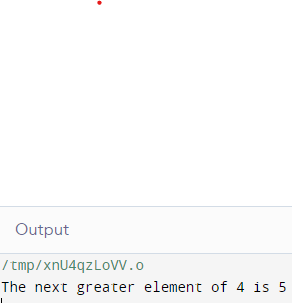Find Next Greater Element in Binary Tree
Binary trees play a crucial role in depicting the relationships between the elements. A binary tree comprises nodes, and each node can have at most two nodes. It is also responsible for making a powerful way of storing, managing, and manipulating the data efficiently. One of the most common problems when working with binary trees is finding out the next more significant element in the binary tree. To find this out; we are given a node in the binary tree, we have to look for the smallest value in the tree that is greater than the value of the node itself.
This problem occurs in various applications, especially when searching for the closest largest value or the successor of a binary tree. Finding the next more significant element can be cumbersome as it involves traversing the tree in a specific order. Then we have to identify the successor of each node and help them build the tree.
In this article, we are given a binary tree, and the main task is to find the next more significant element than that particular target value in the binary tree. In this section of the article, we will dwell on the problem of finding out the next greater element and then look forward to some approaches to tackling the issue.
Implementation
Output

A step-by-step explanation of the code
- The code begins by including and declaring the header files required for the input and output operations.
- Next, we create a structure called 'TreeNod' to showcase a node in the binary tree containing the following three members: a data value and a pointer to the left and right child.
- Next, we create an 'in-order traversal' function that performs an in-order traversal and stores the value in a vector passed as a reference.
- Next, we create another function called the 'getNextGreaterElement' function which is supposed to find the given target value. It generally takes two parameters: the root value, and the next is the target value.
- It then uses the 'find' function to find the target value.
- If the target value is not found, the function will return a -1 value.
- It then calculates the distance between the target value and the value obtained using the 'distance' vector.
- In case no next more significant element is obtained, the function will throw a value of -1.
- The program's primary function generally serves as the program's entry point. It creates a binary tree with a target value of 4, and the final result is set to be printed.
Example 2)
Output

A step-by-step explanation of the code
- The code begins by importing the necessary header files from the Java standard library.
- Next, we create a structure called 'TreeNod' to showcase a node in the binary tree containing the following three members: a data value and a pointer to the left and right child.
- Next, we create an 'inorder traversal' function that performs an in-order traversal and stores the value in a vector passed as a reference.
- Next, we create another function called the 'getNextGreaterElement' function which is supposed to find the given target value. It generally takes two parameters: the root value, and the next is the target value.
- It then uses the 'find' function to find the target value.
- If the target value is not found, the function will return a -1 value.
- It then calculates the distance between the target value and the value obtained using the 'distance' vector.
- If no next greater element is obtained, the function will throw a value of -1.
- The program's primary function generally serves as the program's entry point. It creates a binary tree with a target value of 4, and the final result is set to be printed.
|


 For Videos Join Our Youtube Channel: Join Now
For Videos Join Our Youtube Channel: Join Now









